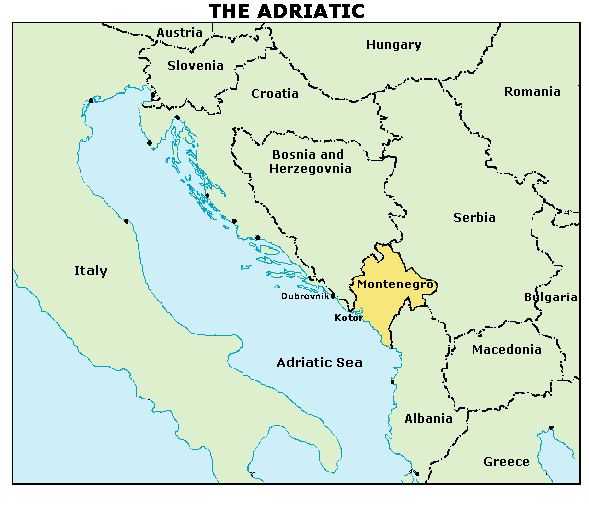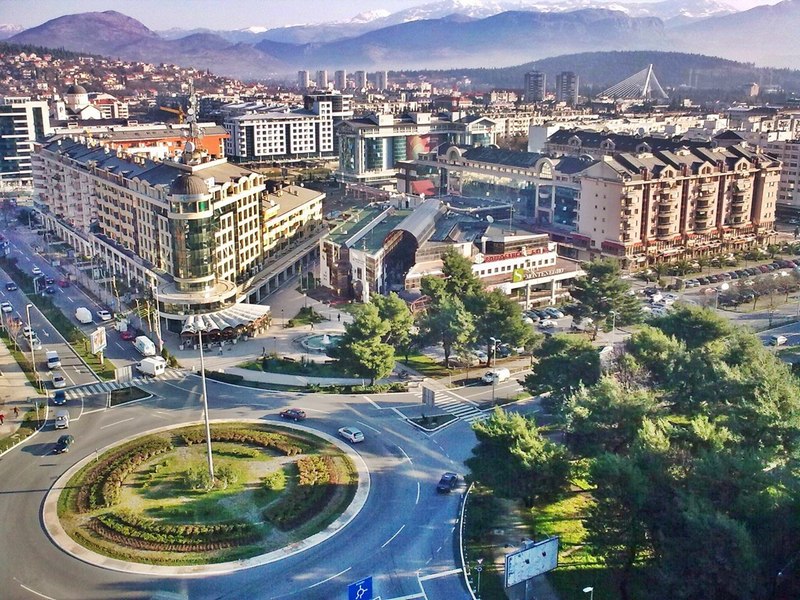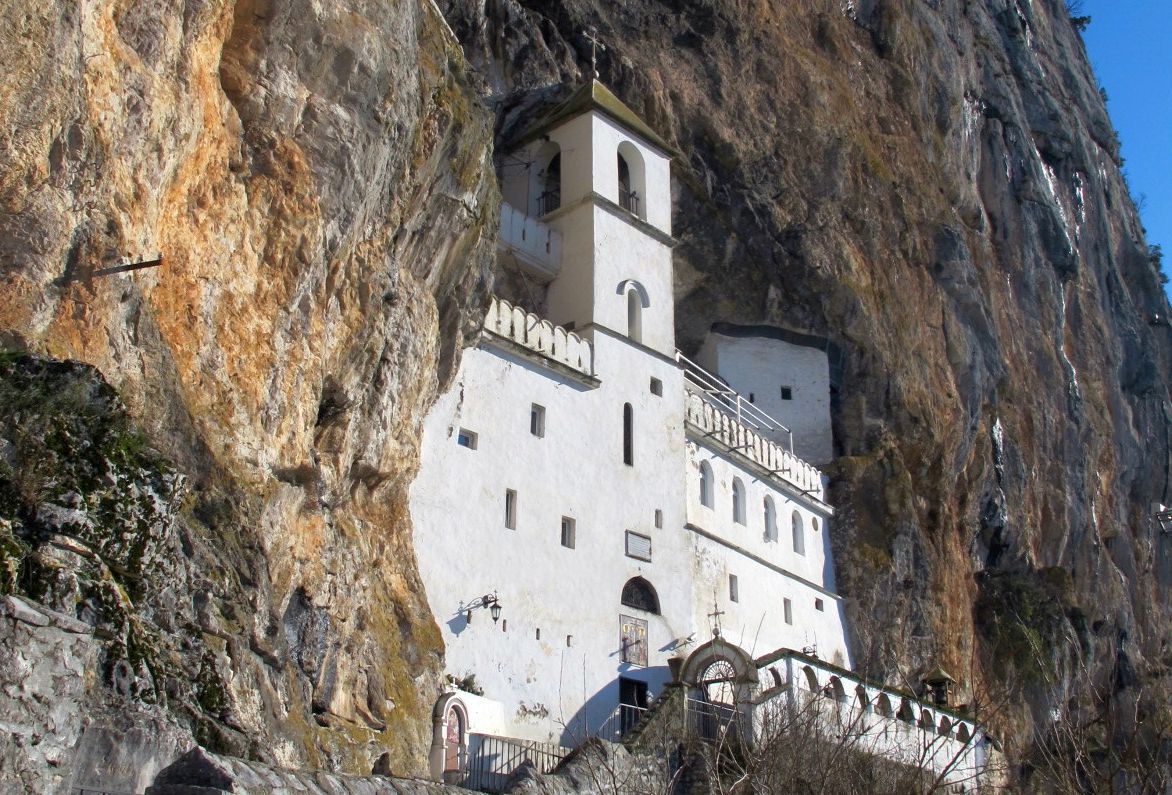I wonder how many
people know that this beautiful country hides along the eastern side of the Adriatic
Sea. Certainly, its neighbors are far better known, especially if you were old
enough to understand anything about the news during the 1990s and early 2000s.
But do you really know anything about this Slavic country with a Latin name?
The name Montenegro
comes from the Venetian Italian for “black mountain.” They were referring to
the dark coniferous forests on Mt. Lovcen. The Montenegrin term for their
country is Crna Gora, which also means “black mountain.” In the past, this land
was known as Zeta (named after the Zeta River) and Doclea/Dioclea (named after
an ancient Illyrian tribe who was living around Podgorica).
Montenegro is
surrounded by Bosnia and Herzegovina to the northwest, Serbia to the northeast,
Kosovo to the east, Albania to the southeast, the Adriatic Sea to the
southwest, and a tiny sliver of border with Croatia near the Bosnian border. Although
it’s a smallish country, it’s quite mountainous, and its karst environment
dives into the Adriatic Sea below. The highest mountain is the Zla Kolata,
located along the border with Albania and part of the Dinaric Alps. The
mountains jutting through Montenegro are some of Europe’s most rugged terrain.
The Bay of Kotor is the largest bay in Montenegro and is listed as a World
Heritage Site.
The Illyrians were
the first people to move into this area and settle down. Their culture was
pretty similar to that of the rest of the Balkans. As the Romans spread their
empire across the Adriatic Sea, they moved into this area, too. They renamed the
area the Province of Dalmatia, and its largest city was Doclea. Byzantine
Emperor Justinian introduced Christianity to this province. During the Middle
Ages, the land changed hands several times within the Serbian Empire until the
Ottomans took over. Although the Montenegrins exercised a certain amount of
autonomy under the Ottomans, they didn’t like being under their rule at all
after a while, and fought to come out from underneath it. It was all brought to
the front in the Great Turkish War. The country declared itself a principality
in 1852 under the direction of Nicholas I. However, there were still political
rifts between various parties, which led to some skirmishes because of it.
However, Montenegro became a kingdom in 1910 and within a couple of years, the
Ottomans lost all of the land in the Balkans. During WWI, Montenegro was part
of Austria-Hungary and later became part of Serbia, but there were tensions
there as well. In 1922, the Kingdom of Serbs, Croats, and Slovenes were
incorporated into Yugoslavia. During WWII, Italian forces took control of the
Montenegrin region of Yugoslavia. And in 1944, it was liberated by the Yugoslav
Partisans and remained part of Yugoslavia until it was dissolved in 1992.
During the Bosnian and Croatian Wars of the early 1990s, Montenegro generally
sided with Serbia. This relationship lasted into the mid-2000s when Montenegro
finally voted for their independence in 2006. (I didn’t realize it was such a
young country.)
The capital city is
Podgorica, which I’ve been mispronouncing the whole time. (It’s something close
to POD-gor-ee-tsuh.) During the years the country was part of Yugoslavia, the
city was known as Titograd. The city itself was founded sometime before the 11thcentury and has gone by other names during that time. Today, it’s the largest
city in Montenegro with a population of somewhere around 186,000 in the metro
area. This city located in the southeast corner of the country, where the
Moraca and Ribnica Rivers meet. Podgorica is the center of government, finance,
and media. There are also many museums, theatres, galleries, sports venues,
colleges and universities, and markets. It’s a city with a mix of ancient
castles mixed with modern architecture.
Montenegro is in
transition to a market economy. From what I can figure out, they use the euro
although their national bank hasn’t officially adopted the it yet (pretty sure their
bank’s Facebook status just says, “it’s complicated”). The vast majority of
their economy is made up of the service industry with a little bit coming from
industry and agriculture. Their infrastructure is extensive and laid out, but
it’s not quite to the quality of other European countries. In recent years,
Montenegro has grown to become one of those Unknown Tourist Destinations people
rave about.
The vast majority
of Montenegrins belong to the Serbian Orthodox Church. The second largest
religious following is Islam. A large portion of the Albanians living in
Montenegro is Sunni Muslim. There is also a smaller number of Roman Catholics
there as well.
While the official
language is Montenegrin, this country is a multi-lingual country. Serbian,
Bosnian, Croatian, and Albanian are all spoken in various communities across
the country, all with ties to their neighboring countries. During its Yugoslav
days, the language was Serbo-Croatian, and during the decades leading up to independence,
Serbian was the dominant language.
Montenegro may not
be one of the most well-known tourist destinations in the world, but for those
who love the climbing mountains or skiing, it should be on their list. And
actually, everyone can certainly appreciate the beautiful karst formations and
Adriatic beaches. In fact, part of the movie “Casino Royale” (2006) was set
in Montenegro (even though it was filmed in the Czech Republic). I have a feeling there are more hidden features here than they
let on. And I’m on a mission to find out more.
Up next: art and
literature








No comments:
Post a Comment